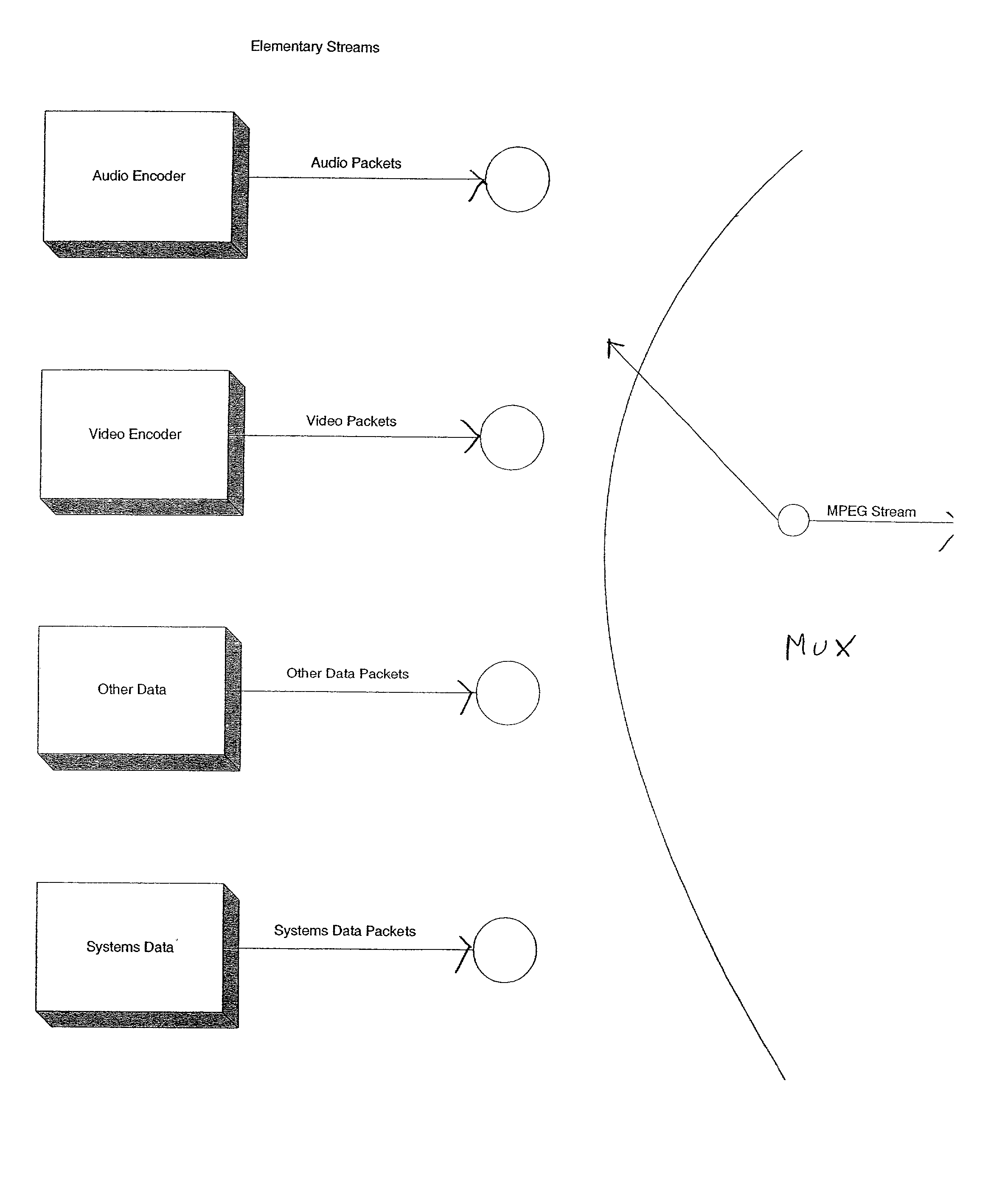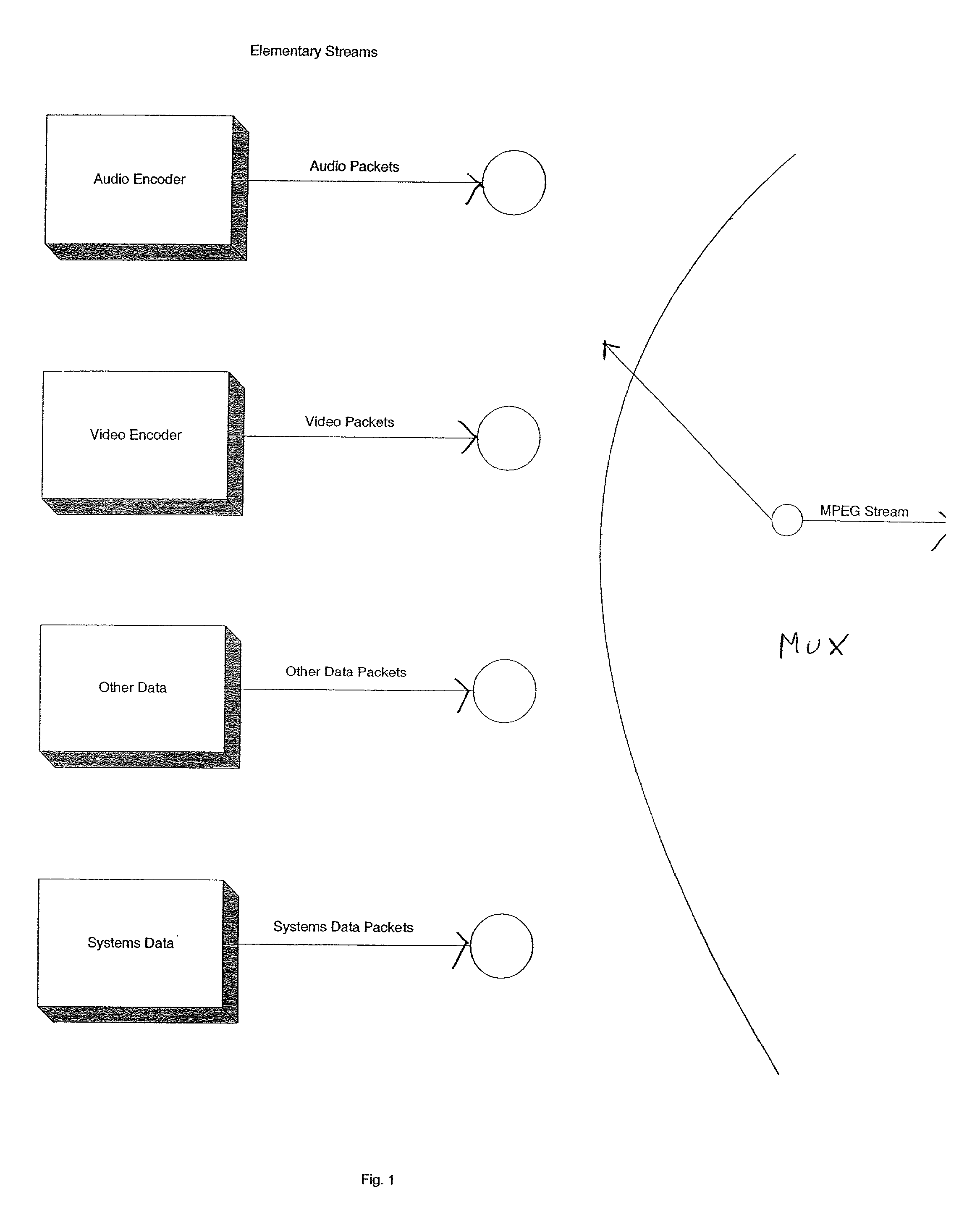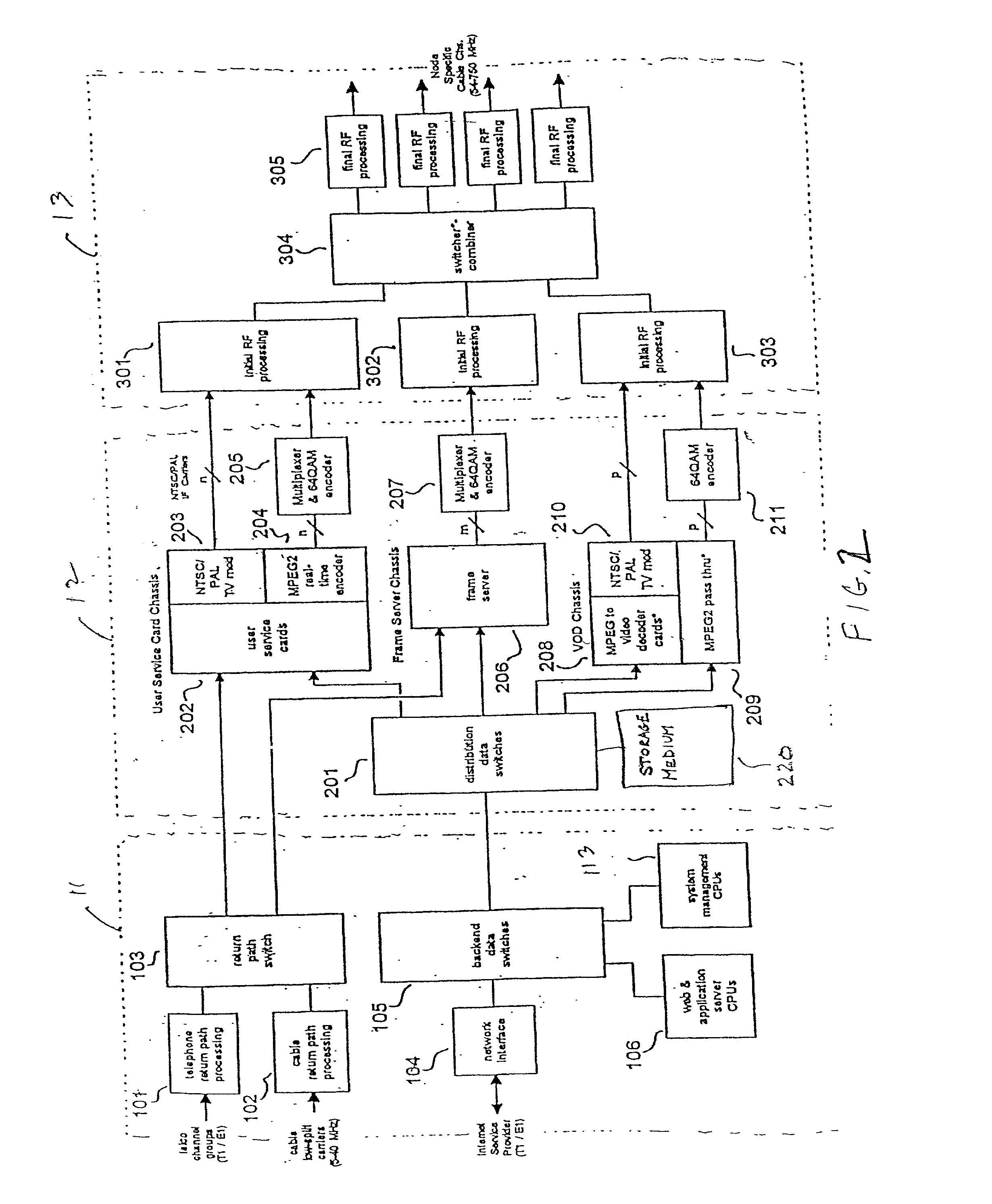High capacity, low-latency multiplexer
a high-capacity, low-latency technology, applied in the direction of selective content distribution, color television with bandwidth reduction, television system, etc., can solve the problems of latency, sent during, and all frames to be delayed enough
- Summary
- Abstract
- Description
- Claims
- Application Information
AI Technical Summary
Problems solved by technology
Method used
Image
Examples
Embodiment Construction
[0015] For the purposes of the description herein and any appended claims, unless the context otherwise requires, the terms "cable television environment" and "cable television system" include all integrated systems for delivery of any information service to subscribers for use in connection with their televisions. These include conventional cable television systems utilizing coaxial cable for distribution primarily of broadcast and paid television programming, cable television systems using fiber optics and mixed fiber optic-coaxial cable, as well as other means for distribution of information services to subscribers.
[0016] Similarly, unless the context otherwise requires, the term "information service" includes any service capable of being furnished to a television viewer having an interface permitting (but not necessarily requiring) interaction with a facility of the cable provider, including but not limited to an interactive information service, video on demand, Internet access,...
PUM
 Login to View More
Login to View More Abstract
Description
Claims
Application Information
 Login to View More
Login to View More - R&D
- Intellectual Property
- Life Sciences
- Materials
- Tech Scout
- Unparalleled Data Quality
- Higher Quality Content
- 60% Fewer Hallucinations
Browse by: Latest US Patents, China's latest patents, Technical Efficacy Thesaurus, Application Domain, Technology Topic, Popular Technical Reports.
© 2025 PatSnap. All rights reserved.Legal|Privacy policy|Modern Slavery Act Transparency Statement|Sitemap|About US| Contact US: help@patsnap.com



